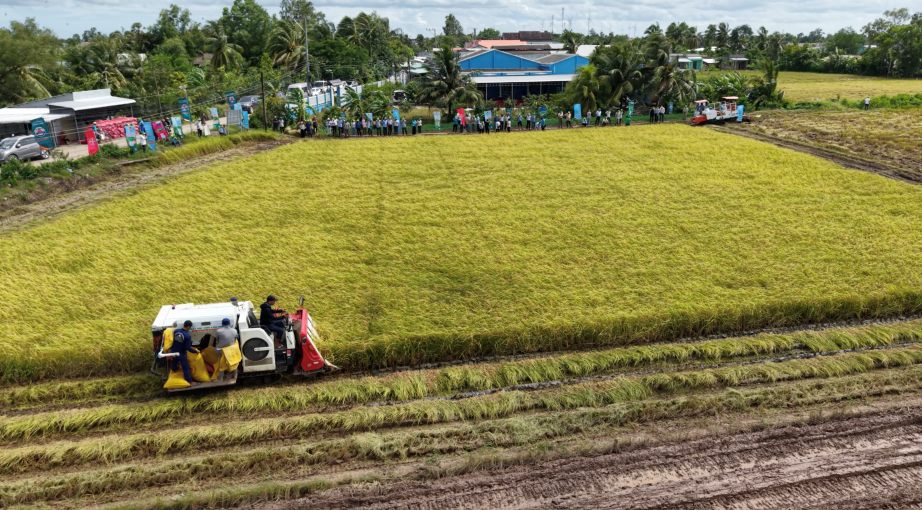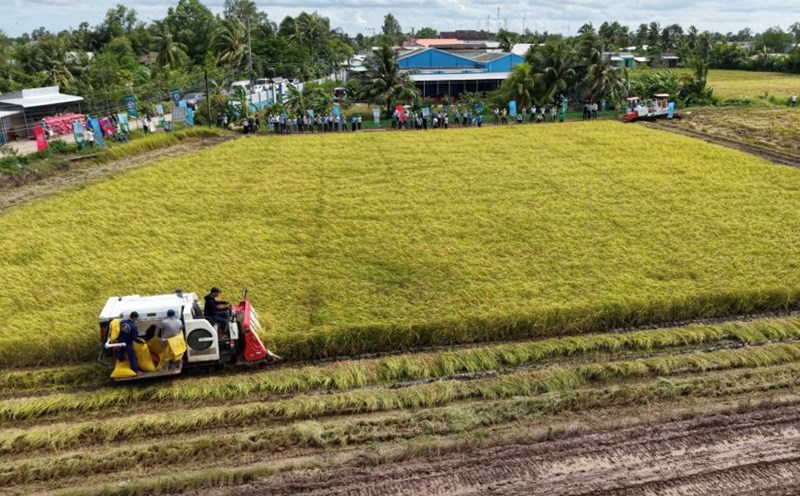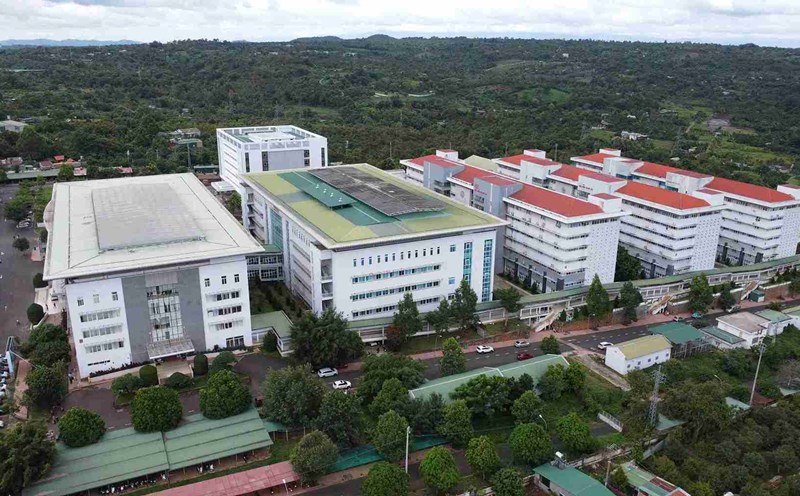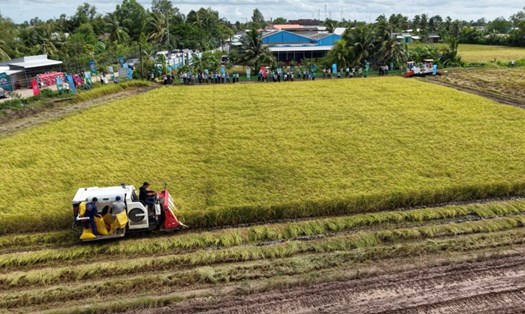According to the National Agricultural Extension Center, after 1 year of implementing the project "Building a model of rice cultivation to reduce emissions to serve sustainable development of the rice export region of the Mekong Delta" (Project) has shown clear efficiency, opening up a sustainable direction for the rice industry in the Mekong Delta.
Accordingly, the project was implemented by the Central Agricultural Extension in coordination with localities on over 600 hectares with 250 farming households in 5 provinces including Kien Giang, Dong Thap, Can Tho, Soc Trang and Tra Vinh (the project was approved before merging administrative boundaries).
The results showed that the average yield reached 7.49 tons/ha, an increase of 4.4% compared to mass production, while costs decreased by 15.4%, average profit reached 31.96 million VND/ha, 6.2 million VND higher than traditional practice. The collection of mechanized straw and reasonable water regulation helps reduce nearly 12 tons of CO2/ha. In addition, 6 models of linkages between cooperatives and enterprises have been formed, expanding value chains and raising rice prices for farmers.

Mr. Le Van Dung, Deputy Director of the Agricultural Extension Center of An Giang province, said - in the summer-autumn crop of 2025, the model of deploying 50 hectares at Thanh Xuan Agricultural Service Cooperative. The results show that production costs have decreased by more than 3.26 million VND/ha, economic efficiency is higher than 9.45 million VND/ha. The profit margin reached 130.3%, an increase of 44.9% compared to outside the model. In particular, 100% of the implementation areas apply synchronous mechanization from sowing, care to harvesting.
In the 1/5 Cooperative Commune, Lieu Tu Commune (Can Tho City), reducing the amount of sown seeds, fertilizers and pesticides has helped save costs by over 5.5 million VND/ha, while profits have increased by nearly 30% compared to the old practice.
Ms. Quach Thi Thanh Binh, Deputy Director of the Department of Agriculture and Environment of Can Tho City, said that advanced models such as "1 right, 5 reduced", "3 reduced, 3 increased", combined with organic fertilizers, biological products and intercropping dry irrigation technology (AWD) have been widely applied, improving productivity, quality and reducing emissions, forming high-quality rice raw material areas, meeting international standards. Can Tho City aims to have 166,000 hectares of rice participating in the project by 2030, completing the Resolution targets for the 2026 - 2030 term.

At the Project summary conference on September 20, Ms. Huynh Kim Dinh, Deputy Director of the National Agricultural Extension Center, assessed that the project was not only effective on an area of 600 hectares but also spread strongly. Many farmers outside the model have learned and successfully applied. She emphasized the need to continue to expand the area, increase training, build chain linkages and apply digital technology to enhance the prestige and position of Vietnamese rice in the international market.








